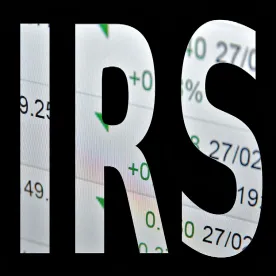In addition to sponsoring organizations of donor advised funds, the Notice may also impact donors and other tax-exempt organizations, including both private foundations and public charities; affected parties should submit comments by March 5, 2018.
On December 4, 2017, the Internal Revenue Service (IRS) and US Department of the Treasury (the “Treasury”) released Notice 2017-73, Request for Comments on Application of Excise Taxes With Respect to Donor Advised Funds in Certain Situations (the “Notice”). The Notice describes the approaches that the Treasury and IRS are considering to address certain issues related to donor advised funds (DAFs). The impact of the Notice, however, extends beyond DAFs and their sponsoring organizations to affect donors and numerous types of tax-exempt organizations, including public charities and private foundations that make grants to or receive grants from DAFs. Comments are due to the Treasury and IRS by March 5, 2018, and we strongly encourage all parties impacted by the Notice to consider providing comments by that date.
Proposed Regulations
The Notice describes three areas where the Treasury and IRS are considering developing proposed regulations of the Internal Revenue Code, as follows:
-
Bifurcation. The Notice proposes that a distribution from a DAF made pursuant to the advice of a donor or advisor that enables a donor, advisor, or related person to attend or participate in an event would be considered to provide more than an incidental benefit to the donor, advisor, or related person and, therefore, be subject to the excise tax under Section 4967. The same analysis would also apply to a case where the distribution from the DAF paid the deductible portion of a membership fee charged by the charity. These types of transactions are commonly referred to as “bifurcation” because the donor or advisor would pay directly the amount of the payment that is nondeductible and recommend that his or her DAF pay the deductible portion—thus bifurcating the payment between the donor and the DAF. For example, Charity A hosts a gala and tickets to the gala cost $1,000—$800 of the ticket price is considered a deductible contribution while $200 is a payment for the ticket. The Notice states that the Treasury and IRS are considering regulations that would provide that if a donor recommended a distribution of $800 from her DAF to Charity A to cover the deductible portion of the ticket price, while paying the $200 nondeductible portion directly, the distribution would confer more than an incidental benefit on the donor.
-
Pledges. The Notice proposes that a distribution from a DAF to a charity will not be considered to result in more than an incidental benefit to a donor, advisor, or related person merely because the donor, advisor, or related person has made a charitable pledge to the same charity, regardless of whether the charity treats the distribution as satisfying the pledge. This treatment of the satisfaction of a pledge as an incidental benefit not subject to the excise tax for prohibited benefits under Section 4967 would only apply if the sponsoring organization makes no reference to the existence of a pledge when making the distribution. Taxpayers may rely on this guidance until additional guidance is issued.
-
Public support. A distribution from a DAF would be treated as an indirect contribution from the donor (or donors) who funded the DAF rather than as a grant from the sponsoring organization. This tracing rule (which would require amending the public support regulations under Sections 170 and 509) would apply solely for purposes of determining whether the donee charity qualifies as publicly supported. This would mean that grants from a DAF would be subject to the 2% public support limitation and not be treated as grants from a public charity. (Grants from public charities are not limited under current law for purposes of the public support calculation.)
Specifically, the Notice provides that the Treasury and IRS anticipate that proposed regulations would provide that the donee organization, for purposes of determining public support, must treat
-
a distribution from a DAF as a grant from the donor or donors who funded the DAF rather than from the sponsoring organization;
-
all anonymous grants as being made by one person (including grants for which the sponsoring organization fails to identify the donor); and
-
a distribution from a sponsoring organization as unlimited support if the sponsoring organization specifies that the distribution is not from a DAF or states that no donor or donor advisor advised the distribution.
In order to implement this proposed rule, the donee organization will need to obtain additional information from the sponsoring organization regarding the donor or donors to the DAF. The Notice specifically asks for comments on these proposed changes related to considerations for DAFs with multiple unrelated donors as well as methods to streamline any required recordkeeping.
-
The Notice also specifically asks for comments on how private foundations use DAFs in support of their purposes, and whether a transfer of funds by a private foundation to a DAF should be treated as a “qualifying distribution” for purposes of Sections 4942 (5% payout requirement) and 4940 (tax on investment income) only if the DAF sponsoring organization agrees to distribute the funds for Section 170(c)(2)(B) purposes within a certain time frame.
Potential Impact on Donors and Tax-Exempt Organizations
We anticipate that the Notice and proposed regulations would impact donors to DAFs and a variety of tax-exempt organizations, including the following:
-
Donors and advisors to DAFs. Donors and advisors would be impacted in a number of ways, including (i) being prohibited from making grant recommendations for bifurcated payments, as doing so could result in the imposition of an excise tax on the donor or advisor; (ii) being required to weigh the public support impact of making an anonymous grant through a DAF; and (iii) needing to determine whether and how they can communicate with a grantee to indicate that a distribution from a DAF should be applied toward an existing pledge from the donor to the donee.
-
Sponsoring organizations of DAFs (including community foundations, national DAFs, and many colleges and universities that sponsor DAFs). Sponsoring organizations would be impacted in numerous ways, including (i) being required to develop a process to ensure that the sponsoring organization does not make distributions from its DAF that constitute bifurcation; (ii) determining how to issue restricted grants without running afoul of the requirement that a distribution not reference a pledge of the donor; and (iii) developing a process for providing information necessary for donees to accurately calculate public support.
-
Public charities. Public charities would be required to develop a system for how to treat contributions from DAFs for purposes of calculating public support, which is likely to require obtaining and processing additional information from the sponsoring organization.
-
Public charities that provide member benefits. The Notice is ambiguous regarding whether a distribution from a DAF could be used to pay a membership fee if the entire payment would have been deductible if the contribution had been made directly. Public charities, such as museums, that regularly provide membership benefits have an interest in ensuring that membership benefits can be provided to DAF donors so long as those membership benefits would not have reduced the charitable contribution deduction if made directly.
-
Private foundations. The Notice specifically asks for comments regarding how private foundations use DAFs in support of their purposes and whether distributions from private foundations to DAFs should be treated as “qualifying distributions.” Private foundations currently using DAFs, regardless of whether those contributions to DAFs are treated as qualifying distributions, should consider providing comments to the IRS on these issues.




 />i
/>i

